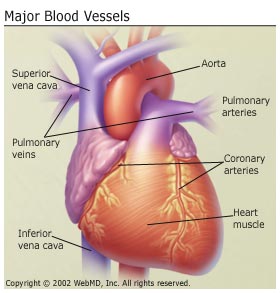Home » Heart Disease »
Cardiac Arrhythmia
Heart Beat
The heart functions as a machine which receives impure blood from all the organs in the body, sends it to the lungs for purification, receives the pure blood from the lungs and sends it to the other parts of the body. This is enabled by the presence of four chambers and two major valves in the heart. The process occurs in a rhythmic manner where during each heartbeat, the heart expands and contracts to receive the blood (from the other parts of the body and the lungs) and push it out (to the lungs and other parts of the body). The lub-dub sound of the heart during this process is generated as a result of the closure of the two major valves as the heart is pumped out.

This rhythmic process occurs as a result of electrical stimulation from a bunch of tissues known as the sinoatrial node or the SA node. This node generates electrical impulses which are transferred to the heart muscles, enabling them to expand or contract in a rhythmic manner. Any condition that disrupts the impulse generation from the SA node or its transfer to the heart muscles can lead to arrhythmia.
Arrhythmia -Types, Risk & Treatment
When the heart is beating too fast, the condition is known as tachycardia [ABC1] and if the heart rate is too slow, it is termed bradycardia[ABC2]. Details about the symptoms and causes of tachycardia and bradycardia have been enumerated in the individual articles about these conditions.
While it may not be bothersome in many, arrhythmia can often lead to life threatening situations if left untreated. The commonest complications of arrhythmia include stroke and heart failure.
The treatment options available for arrhythmia include:
- Medications – such as calcium channel blockers, beta blockers, and digoxin
- Pacemaker – a device implanted in the chest which functions like the SA node
- Defribillator – a device used to deliver a jolt of electricity to the heart muscles to rectify abnormal heart beat
- Catheter ablation – procedure where the abnormal regions in the heart muscles/tissues that are responsible for abnormal rhythm are destroyed
- Surgical therapy – for the repair of heart valves or other underlying abnormalities that cannot be rectified with medications or medical procedures
Outlook
With proper care, individuals with cardiac arrhythmia can lead a normal life. Medications when advised need to be taken regularly. Periodic visit to the healthcare provider is necessary to monitor the condition. A healthy lifestyle with a proper diet can prevent the occurrence of complications.




